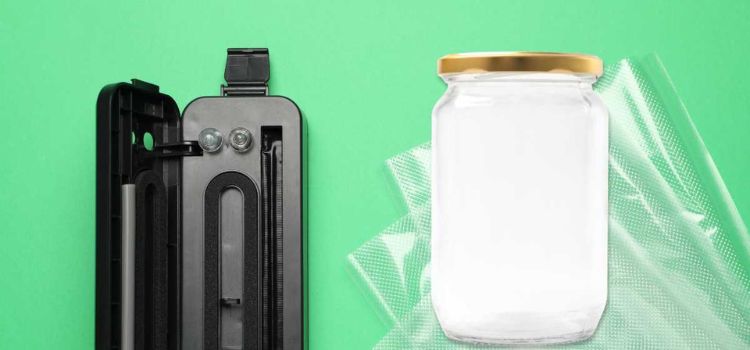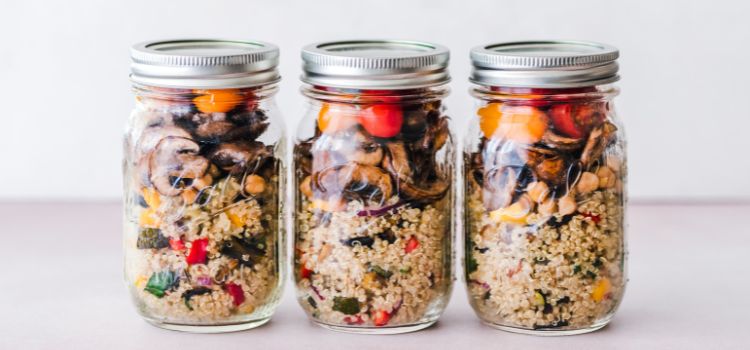As an Amazon Associate, I earn from qualifying purchases

Vacuum sealing jars is a time-tested method for preserving food, offering a way to extend the shelf life of various items by removing air and creating an airtight environment. This technique is particularly popular among home canners and those looking to store food for long periods without compromising quality.
The benefits of vacuum sealing are numerous, from maintaining flavor and nutritional value to preventing spoilage and waste. But how long do vacuum-sealed jars actually last? Understanding the factors that influence their longevity can help you make the most of this preservation method.
Factors Affecting the Shelf Life of Vacuum-Sealed Jars
Several factors play a role in determining how long vacuum-sealed jars will last. These include the type of food being stored, environmental conditions, and the quality of the seal.
- Type of Food Being Stored: Different foods have varying shelf lives, even when vacuum-sealed. Dry goods like grains and pasta tend to last longer than perishable items like fruits and vegetables. The inherent properties of the food, such as moisture content and acidity, can significantly impact how long it remains fresh.
- Environmental Conditions Such as Temperature and Humidity: The environment where the jars are stored is crucial. High temperatures and humidity can accelerate spoilage, even in vacuum-sealed jars. Ideally, jars should be kept in a cool, dark place to maximize their shelf life.
- Quality of the Seal and Sealing Process: The effectiveness of the vacuum seal is paramount. A strong, airtight seal prevents air and moisture from entering the jar, which can lead to spoilage. Ensuring that the sealing process is done correctly is essential for long-term storage.
Typical Shelf Life for Different Types of Foods
The shelf life of vacuum-sealed jars varies depending on the type of food stored. Here’s a closer look at what you can expect for different categories:
- Shelf Life for Dry Goods Like Grains and Pasta: Dry goods are among the most stable items to store in vacuum-sealed jars. When properly sealed and stored in a cool, dry place, grains and pasta can last for several years. The absence of moisture and air helps maintain their quality and prevent pests.
- Shelf Life for Preserved Foods Like Jams and Pickles: Preserved foods such as jams, jellies, and pickles benefit greatly from vacuum sealing. These items can last up to a year or more, depending on the sugar or vinegar content, which acts as a natural preservative. However, it’s important to monitor for any signs of spoilage, such as changes in color or smell.
- Shelf Life for Perishables Like Fruits and Vegetables: Fresh fruits and vegetables have a shorter shelf life compared to dry goods and preserved foods. Vacuum sealing can extend their freshness by a few weeks to a couple of months, but they should be consumed relatively quickly to enjoy optimal taste and texture.
Tips for Maximizing Shelf Life

To get the most out of your vacuum-sealed jars, consider these practical tips:
- Ensuring a Proper Vacuum Seal: The key to long-lasting vacuum-sealed jars is a strong seal. Make sure the jar rims are clean and free of debris before sealing. Using a reliable vacuum sealer and following the manufacturer’s instructions can help achieve the best results.
- Storing Jars in a Cool, Dark Place: Temperature and light can affect the quality of vacuum-sealed foods. Store jars in a pantry or cellar where they are protected from heat and direct sunlight. This helps maintain the integrity of the seal and the quality of the food inside.
- Regularly Checking Seals for Integrity: Over time, seals can weaken or fail. Regularly inspect your vacuum-sealed jars for any signs of air leakage or spoilage. If a seal is compromised, it’s best to consume the contents promptly or reseal the jar if possible.
Conclusion
Vacuum sealing is an effective way to extend the shelf life of various foods, offering a practical solution for long-term storage. By understanding the factors that influence the longevity of vacuum-sealed jars and following best practices, you can ensure that your preserved foods remain fresh and safe to consume.
In summary, while vacuum sealing significantly enhances the shelf life of many foods, it is not a one-size-fits-all solution. The type of food, storage conditions, and quality of the seal all play critical roles in determining how long vacuum-sealed jars will last. By taking these factors into account, you can make the most of this preservation method and enjoy the benefits of fresh, flavorful food for months or even years.
FAQ
Can bacteria grow in a vacuum sealed container?
Yes, certain bacteria can grow in a vacuum-sealed container, especially anaerobic bacteria that thrive without oxygen. While vacuum sealing reduces oxygen, it doesn’t eliminate bacterial growth if the food was already contaminated. Proper hygiene and storing at correct temperatures are crucial for safety.
How long will flour last in a vacuum sealed jar?
Flour stored in a vacuum-sealed jar can last up to two years or more, depending on storage conditions. Vacuum sealing minimizes exposure to air and moisture, preserving the flour’s quality. For best results, store the jars in a cool, dark place to prevent spoilage.
How long does vacuum seal last?
The effectiveness of a vacuum seal can last from several months to a few years, depending on factors like the quality of the seal, storage conditions, and the type of food. Regularly checking seals for integrity and storing in optimal conditions will help maintain the vacuum seal’s longevity.
As an Amazon Associate, I earn from qualifying purchases